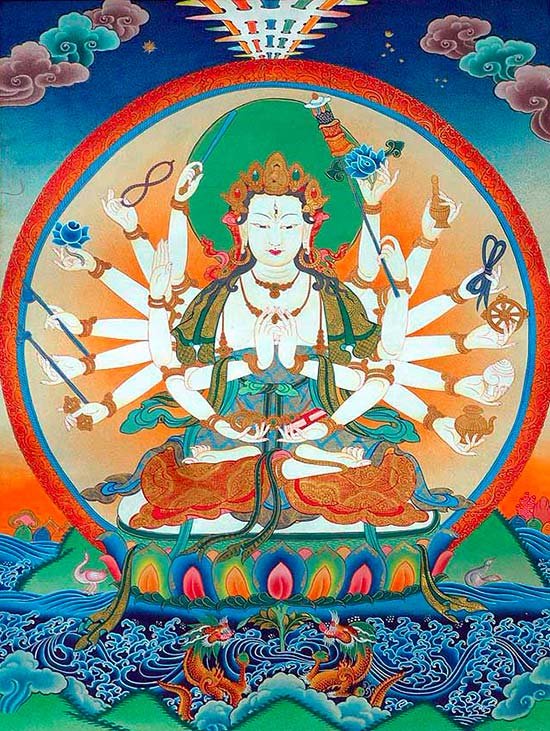Maha Prajnaparamita Sastra
by Gelongma Karma Migme Chödrön | 2001 | 941,039 words
This page describes “cudasatyaka-sutra” as written by Nagarjuna in his Maha-prajnaparamita-sastra (lit. “the treatise on the great virtue of wisdom”) in the 2nd century. This book, written in five volumes, represents an encyclopedia on Buddhism as well as a commentary on the Pancavimsatisahasrika Prajnaparamita.
The Cūḍāsatyaka-sūtra
Moreover, Sa-tchö-k’i (tche) Ni-k’ien-tseu (Satyaka Nirgranthīputra), his breast covered with copper plates, proclaimed:
“There is no one who, engaged in debate with me (mayā vādena vādaṃ samārabdhaḥ), would not be sweating (sveda) in streams and would not be defeated. Even a big elephant, a piece of wood, a stone, that would hear my objections, would sweat in streams.”{GL_NOTE::}
Having made this declaration, he went to the Buddha and debated with him. The Buddha questioned him but Nirgrantha was unable to respond. His sweat flowed until it moistened the ground and his whole body was soaked.
The Buddha said to him:
“You just said: ‘There is no one who, engaged in debate with me, would not be sweating o streams.’ Now it is your sweat that is flowing and that moistens the ground. Do you want to examine the Buddha and see if he has any signs of sweat?”
Immediately the Buddha took off his upper robe uttarāsaṅga) and asked: “Where is the sweat?”
However, there are people who say:
“It is possible to be sweating on the forehead but the body is not sweating. Although the Buddha does not have a sweaty brow, certainly his body sweats.”
This is why the Buddha removed his upper robe and showed his body.{GL_NOTE::} As a result of this, the heretics directed themselves to the faith and all entered into the Buddha Dharma.
Therefore this physical action of the Buddha was in accordance with knowledge.
Notes on the Cūḍāsatyaka-sūtra:
Cūḷasaccasutta of the Majjhima, I, p. 227–237; Tsa a han, T 99, k. 5, p. 35a–37b; Tseng yi a han, T 125, k. 30, p. 715a–717b.
